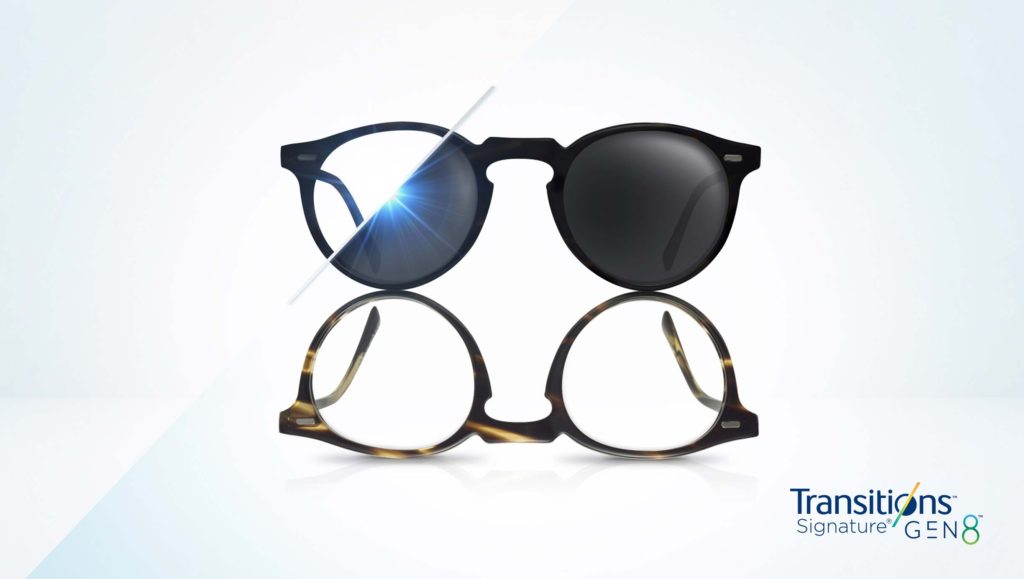The functionality of the photochromatic lens is such that it changes light transmission rate when UV light touches its surface. These lenses tend to change color when exposed to UV light. This is achieved by the activation in Silver Halide crystals present in photo-chromatic lenses. Crystals are activated when UV rays fall on them. Similarly, when removed from UV exposure it fades and takes back its original tone. Photo-grey lenses and transitions both aim to provide UV protection but both use different processes of doing so. Let us understand the pros and cons in detail with each point:
Process of making

Photo-grey lenses are made using the in-mass process. In this method, the silver halide crystals are added to the lens-making solution itself. To understand better consider it as adding salt to flour before kneading the dough. Since crystals are present equally on the lens, upon exposure to UV rays the whole lens becomes completely dark.
Transition lenses are made using the imbibing process. In this process the lens is dipped in the UV-based solution or, in Transition lenses solution is sprayed on the F1 surface of the CR lens. The crystals form a layer up to a certain depth of the lens surface. In a similar manner, the layer of UV protective crystals is activated and darken with exposure and to UV light and regains its original color when kept away from UV rays.
Darkness

The thickness of the photo-grey lens depends upon the power. A lens having high plus power have center thickness and a lens having high minus power has edge thickness. In such cases making a photo-grey lens will not be successful in achieving equal darkness over the entire lens. Due to the in-mass process area on the lens that has more thickness will have more density of UV crystals which is why it will achieve more darkness in either center or towards periphery if the power is too high.
Transition as mentioned above uses an imbibing process which is why UV crystals are spread across evenly on the lens and darkness does not vary on the lens.
Previous exposure
The darkness of the photo-grey lens also depends upon previous exposures, meaning how much darkness it achieved upon last exposure? The old or used lens tends to get darker compared to the newly made lenses. If suppose you need to replace only one of the lens of your glasses then you need to get a bleaching treatment for the other lens which wish to keep. That is because, upon regular use, the lens becomes a little darker than to new one. Without bleaching treatment, both eyes result to have lenses of light and dark tones.
With Transition, this is not really required although the process of bleaching is the same. It is either achieved by heat treatment or by putting it into hot water.
Light Intensity
Another factor that the darkness of the photo-grey lens is dependent upon is the intensity of UV radiations. If UV radiations are less it will not achieve completeness darkness. Also, the transition time between gradations is slow.
The transition lens quickly changes its color from dark to light and light to dark. Hence if you are coming indoors from outside you don’t feel the need to remove glasses to see clearly.
We can conclude that transition lenses with their inbuilt contrast sensitivity are more efficient in UV protection compared to photo-grey lenses. Transition coating is available with Essilor lenses. You can check with your local optician to suggest lenses with transition in your budget.









